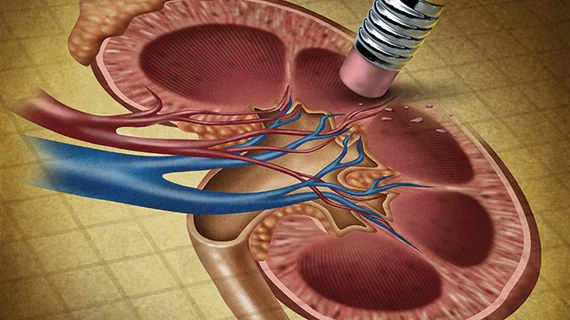ACR: Risk of administering CT contrast in patients with kidney disease ‘has been overstated’
The risks associated with administering IV iodinated contrast agents to patients with limited kidney function have been overinflated, according to an analysis of the most modern data on the topic.
That was the message put forth by a consensus statement from the American College of Radiology and the National Kidney Foundation, published Jan. 21 in Radiology. Both groups pointed to the “conflation” of contrast-associated acute kidney injury with contrast-induced acute kidney injury in uncontrolled studies as a primary culprit behind the confusion.
“The historical fears of kidney injury from contrast-enhanced CT have led to unmeasured harms related to diagnostic error and diagnostic delay,” lead author Matthew S. Davenport, MD, associate at the University of Michigan said in an RSNA statement. “Modern data clarify that this perceived risk has been overstated.”
The new guidelines are based on a group of hospitalized pediatric patients who underwent CT imaging with intravenous contrast material over a 10-year period at a single medical center. Researchers found that those with stable kidney function who received contrast had a similar rate of acute kidney injury as those who were not exposed to the iodinated material.
Establishing a direct causal relationship between IV contrast administration and the development of contrast-associated acute kidney injury (AKI) has been historically difficult to evaluate for many reasons. Among them is a lack of universally accepted criteria for diagnosing the injury. However, a causal relationship does exist between contrast media and kidney injury, defined as contrast-induced acute kidney injury.
“A primary explanation for the exaggerated perceived nephrotoxic risk of contrast-enhanced CT is nomenclature,” Davenport said. “Disentangling contrast-induced AKI (causal AKI) from contrast-associated AKI (correlated AKI) is a critical step forward in improving understanding of the true risk to patients.”
The consensus statement seeks to do just that. It answers key questions and offers recommendations for using IV contrast media in treating patients with differing degrees of impaired kidney function.
In an editorial published alongside the consensus document, Harriet J. Paltiel, MD, with Boston Children’s Hospital’s Department of Radiology argued the study should give some relief to clinicians who are on the fence about administering contrast to pediatric patients.
“This should reassure health care providers that clinically indicated intravenous contrast-enhanced CT can be safely performed in this population of patients,” she said.
The researchers did maintain that prospective controlled studies are required in both adult and pediatric populations to clarify the risk of contrast-induced acute kidney injury.

